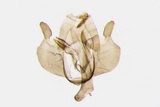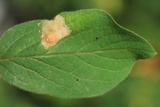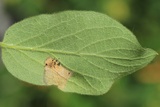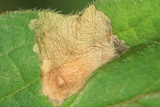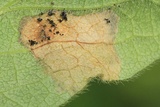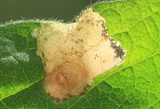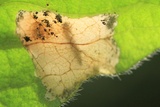Perittia obscurepunctella (Stainton, 1848) Species
Last modified: Nov. 28, 2025, 5:38 p.m.
Used to be rarely observed but more recorded since the beginning of the 21st century, probably because of more intensive searches. Hitherto still a very rare species in Belgium, more observed in the Kempen area.
Details
- Classification
- Family: Elachistidae > Subfamily: Elachistinae > Genus: Perittia > Species: Perittia obscurepunctella
- Vernacular names
- Kamperfoeliemineermot (NL), Honeysuckle Dwarf (EN)
- First mention in Belgium
- Fologne E. 1862c. Notes sur quelques lépidoptères observés en Belgique. — Annales de la Société entomologique belge 6: 170–176. On page 174. view page
- Status
-
Native
Distribution
Imago
The wingspan is about 9 mm.
Museum specimens
No pictures yet!Specimens in nature
No pictures yet!Caterpillar
Greyish green with a dark green dorsal line. Head capsule and prothoracic plate dark brown.
Mine
A conspicuous blotch mine, situated mainly at the edge of a leaf and mostly low to the ground. Can be found from June till August.
See also bladmineerders.be
Bionomics
The egg is deposited singly at the underside of a leaf. When more than one egg is deposited on the same leaf the mines formed from the larvae may join into a large blotch mine. Some of these blotches contain a central darker brown spot. This is formed by a silken spinning in which the frass is concentrated. Other frass is spread separately in dark brown patches all over the mine.
Pupation in a dead leaf which need not necessarily be of the same food plant.
The moths are rarely recorded. They are active at night.
Flight periods
One generation a year from early April till the end of May.
Observed on
- Host plant (species):
- Lonicera periclymenum, Lonicera xylosteum and Symphoricarpos albus
Oligophagous on Caprifoliaceae with a preference for Lonicera periclymenum.
Habitat
Forests and forest edges, where the food plant grows.
